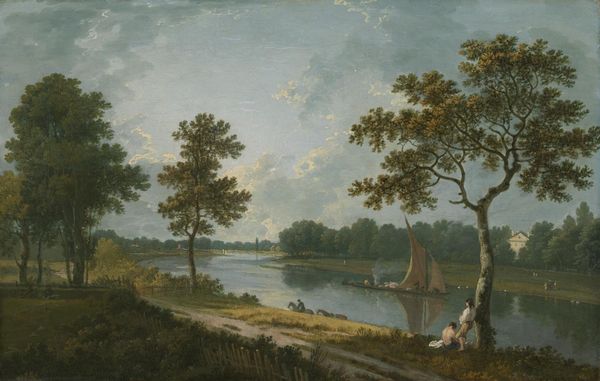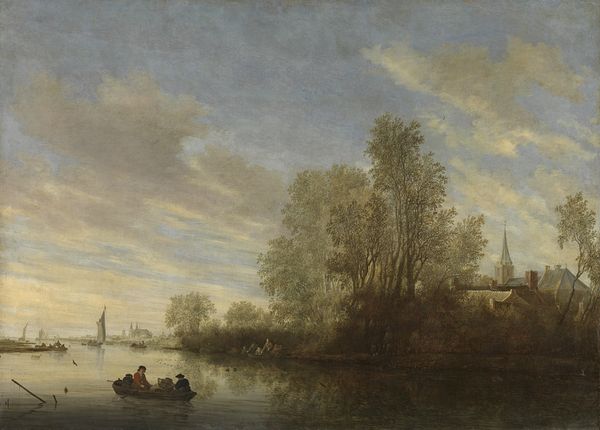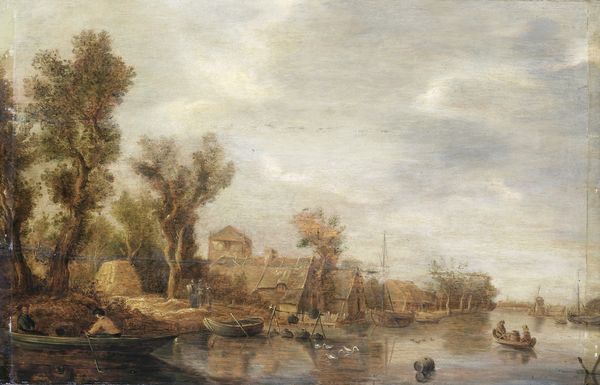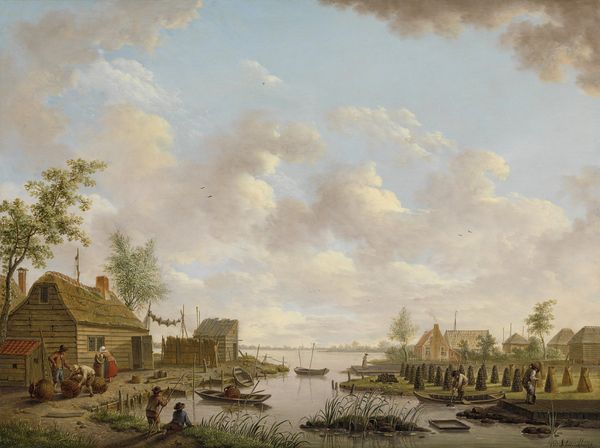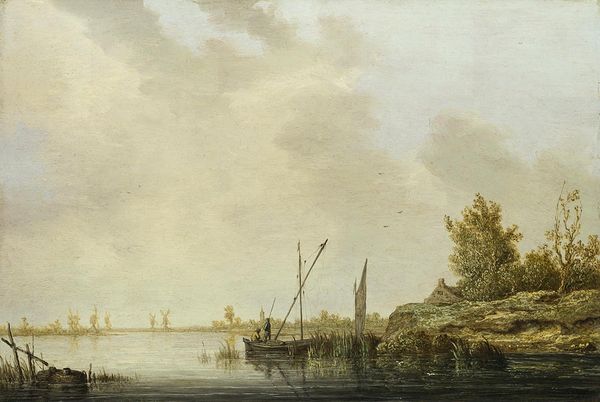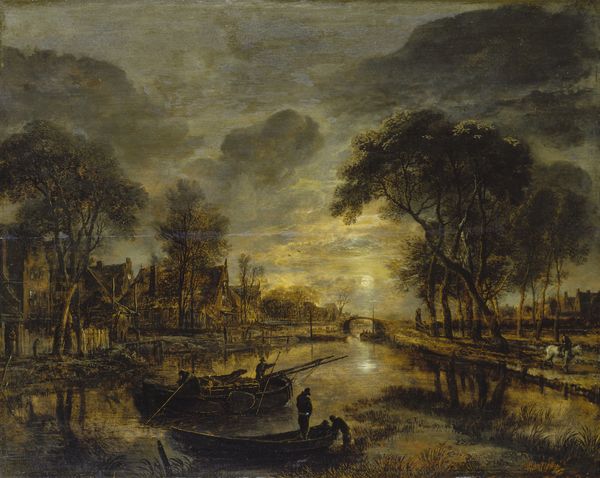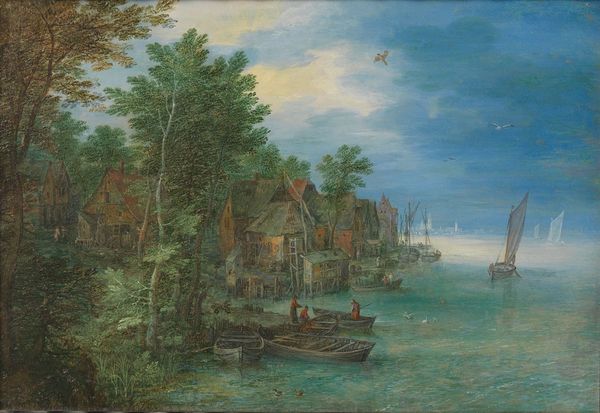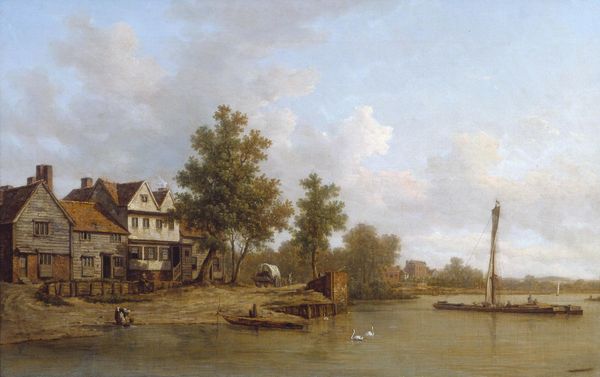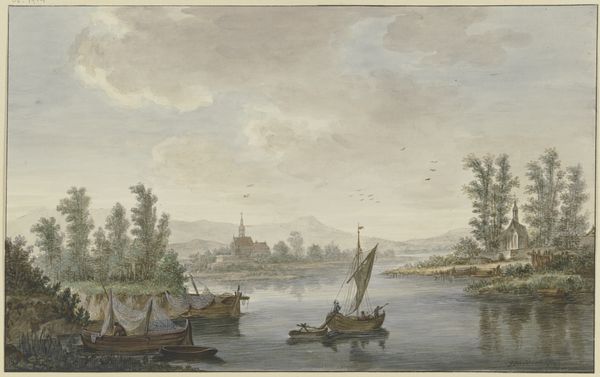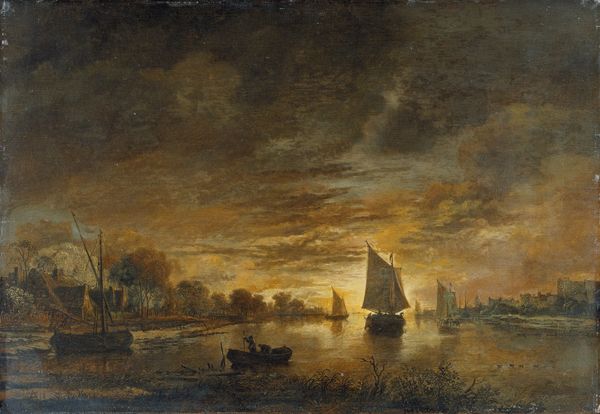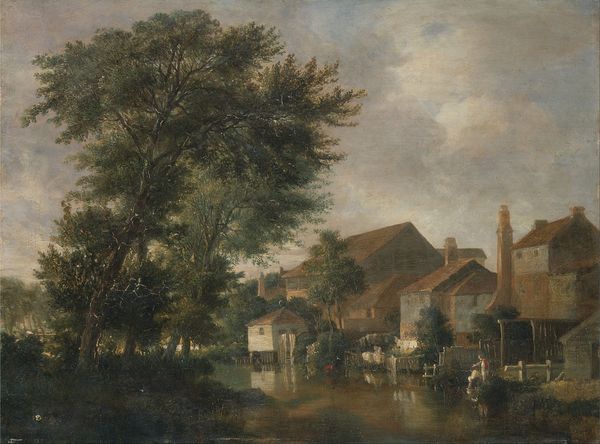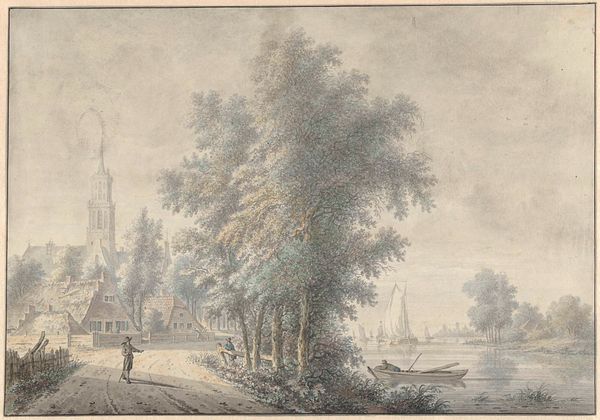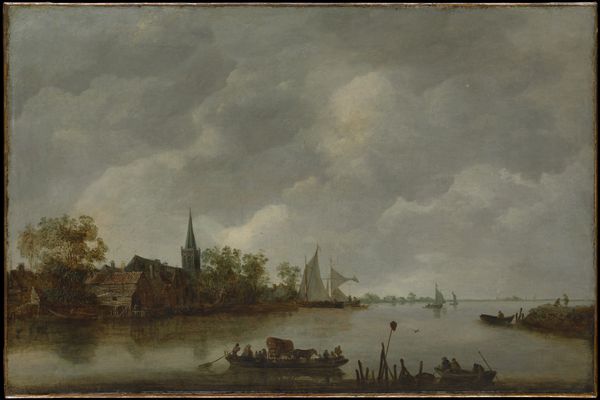
Dimensions: height 323.5 cm, width 534 cm, height 329 cm, width 539.5 cm
Copyright: Rijks Museum: Open Domain
Curator: Looking at this idyllic scene, I'm immediately struck by how carefully the artist has built this space with these layers. It almost feels theatrical, like a stage set. Editor: Indeed. What you're responding to is the rococo influence, specifically, Jurriaan Andriessen's "Three wall hangings with a Dutch landscape," created in 1776. Andriessen was quite successful in blending the conventions of Dutch Golden Age landscape with the more ornate aesthetic preferences gaining popularity. Curator: Ah, yes, rococo, I can definitely see it now, but still, its scale and original intended purpose, the watercolor artwork almost reads as tapestry. What do we know about its making? Editor: He made this work using watercolors, a choice that really speaks to the airy lightness so characteristic of the time, in my opinion. The deliberate construction with these watercolors emphasizes a separation between the material world and its rendering, so that the scenes he pictures take on qualities that are at once hyper-real and impossibly dreamy. Curator: And what sort of world did Andriessen operate in? Because these riverbanks, these people, aren’t separate from social forces and conditions, they are intertwined. The figures by the water seem unaware or unconcerned by the viewer observing them. There's a class aspect here that's quite overt, do you agree? Editor: I agree that the figures shown embody certain characteristics—these aren’t working figures, nor aristocracy—but rather representations of rising merchant classes or land-owners. The way labor itself seems divorced from its visible products fascinates me; a great deal of attention and labour would have been given to this, in its original form as a textile mural, by unseen artisans and workers in textile production to manufacture tapestries, but this disappears to only display the work as artistic vision or ideal nature. It almost mirrors how colonial wealth benefited the elite class within Holland itself at that time. Curator: Yes, and those realities—the economic systems, the inequalities of access—directly shape who gets to enjoy the "natural" world presented, too, doesn't it? That idyllic vision is fundamentally bound to these power dynamics and I feel they should be challenged whenever engaging with art. Editor: Certainly, and that tension gives it all a subtle, but necessary complexity. I hadn't initially appreciated that tension until we unpacked the relationship here. Thank you. Curator: My pleasure, analyzing context helps create the necessary groundwork for seeing such realities.
Comments
rijksmuseum about 2 years ago
⋮
From c. 1770 it became fashionable to cover the walls of rooms with painted wall hangings. With their idyllic scenes, they could transform a canal house room into an oasis. These three paintings (together with some missing ones) presented a continuous Dutch landscape, interrupted only by the room’s panelling, windows and doors. They were made for a room in the house at 22 Nieuwe Doelenstraat, Amsterdam.
Join the conversation
Join millions of artists and users on Artera today and experience the ultimate creative platform.
